LINCOLNSHIRE AVIATION HERITAGE CENTRE - East Kirkby / UK
Update: 2022/09/27 by Shawn Clish / CHK6
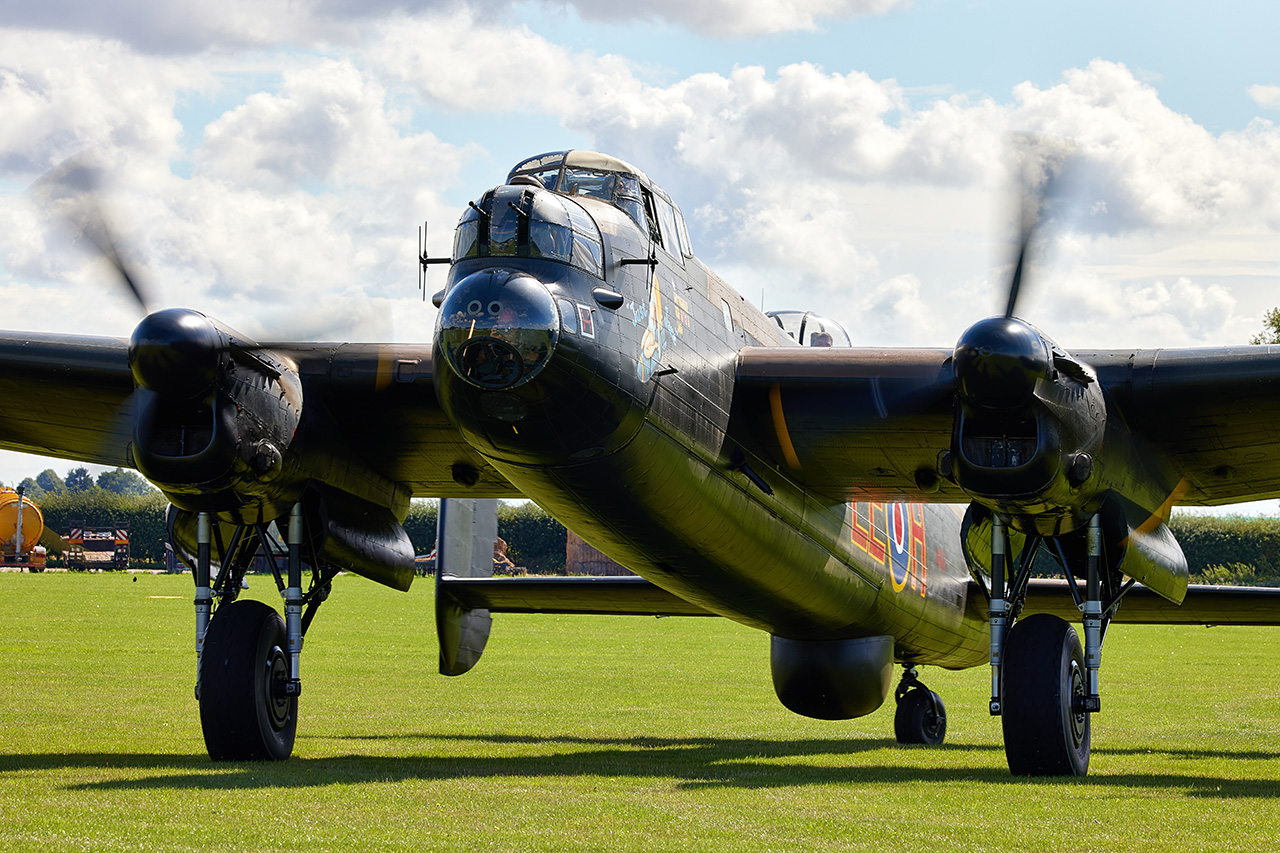
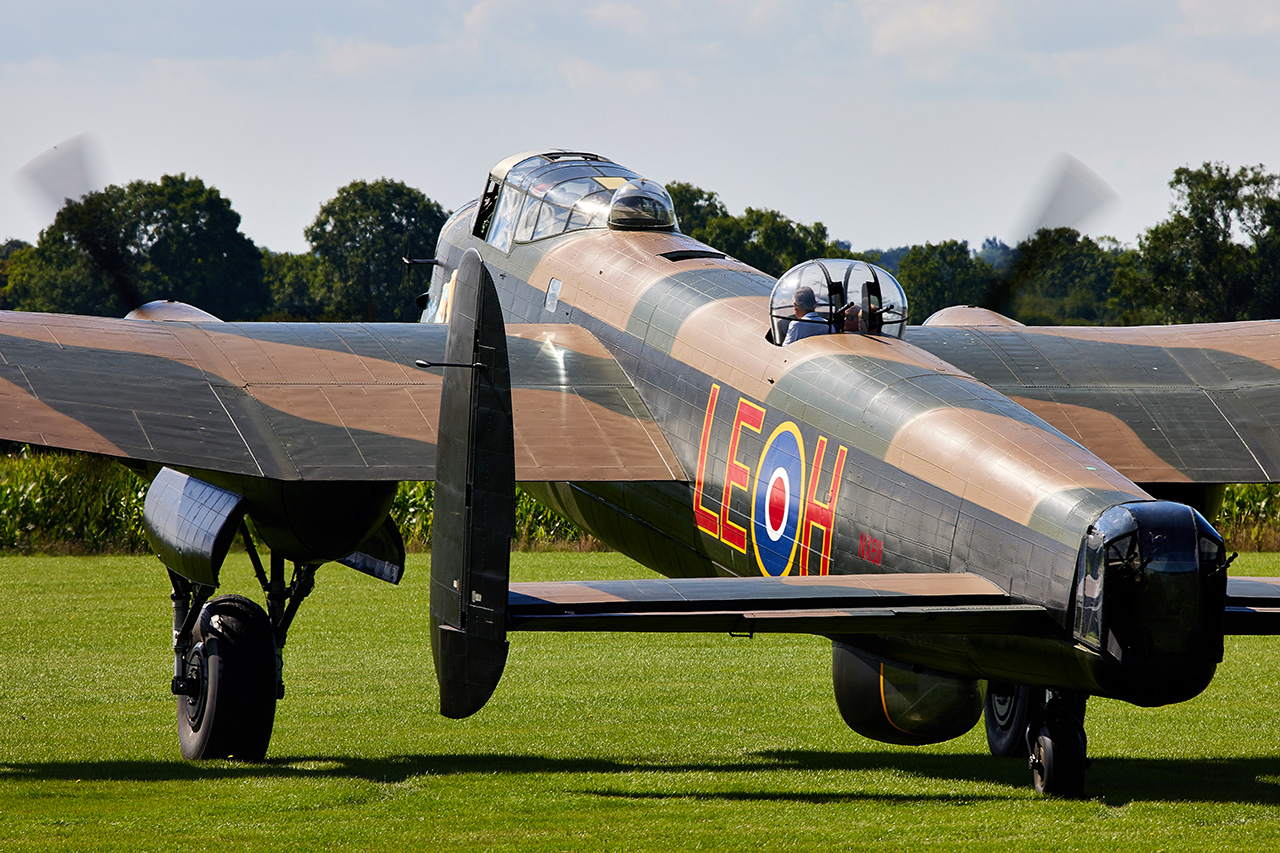
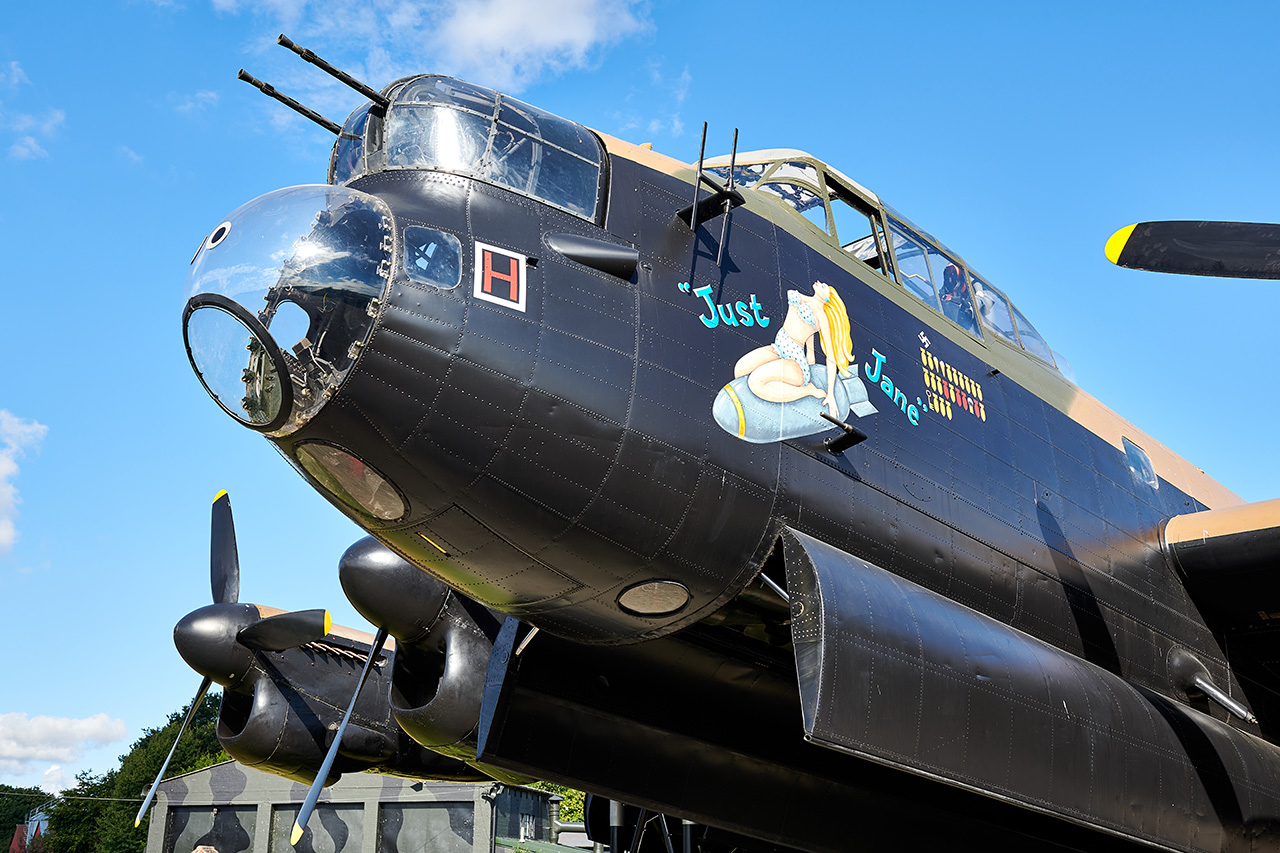
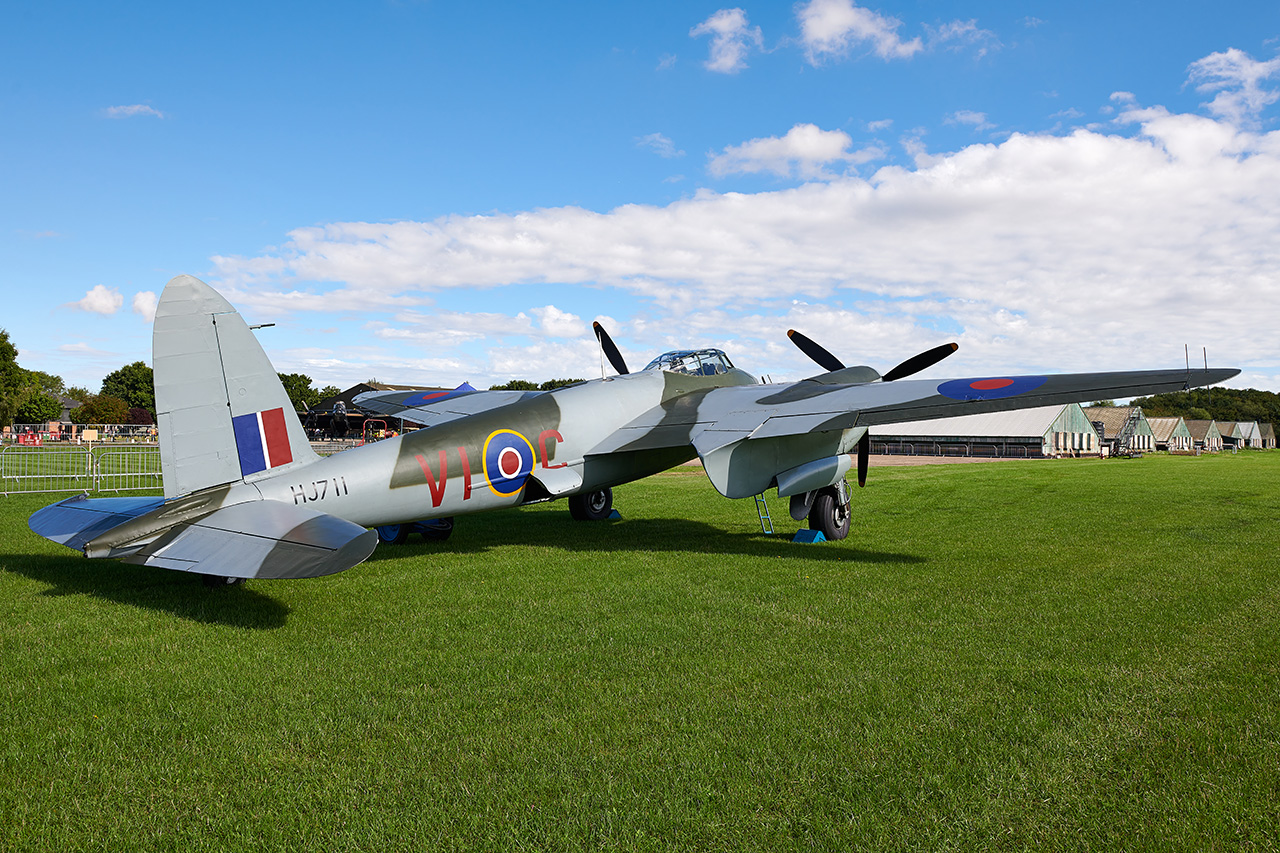
On Saturday August 27, 2022, I had the pleasure of visiting the Lincolnshire Aviation Heritage Centre in East Kirkby, Lincolnshire, United Kingdom. The museum is located on the grounds of former Royal Air Force (RAF) East Kirkby, which served as a Bomber Command Station for RAF 57 and 630 squadrons from the time it was built in 1943 until the end of World War Two. The museum is dedicated to the memory of the 55,573 members of Bomber Command who lost their lives during the war and endeavours to educate future generations about the heroism displayed by these brave airmen. The highlight of my visit were the taxy runs by the museum’s Avro LANCASTER Mk.VII NX611 ‘Just Jane’ and a de Havilland MOSQUITO NF.II HJ711.
After World War Two, the airfield was briefly used by the United States Air Force’s Air Rescue Service under the Air Transport Command before cessation of military activity in 1958. In 1964 it was purchased by Lincolnshire farmers Fred and Harold Panton, who then purchased Lancaster NX611 in 1983 before moving it to East Kirkby in 1987. The museum officially opened in 1988 and includes the original Control Tower, numerous vehicles including a one-of-akind Ford WOT1 crew bus, an incredibly rare Handley Page HP.52 HAMPDEN restoration, an impressive assortment of artifacts and of course the centrepiece, Avro Lancaster Mk.VII NX611 ‘Just Jane’. While the museum is dedicated to the efforts of all of Bomber Command, it specifically serves as a memorial to the eldest Panton brother, Christopher, who was lost on operations in 1944.
On the night of Friday March 30, 1944, his Halifax HX272 took off from RAF Skipton-on-Swale to take part in a raid on Nuremberg, Germany
S. Clish
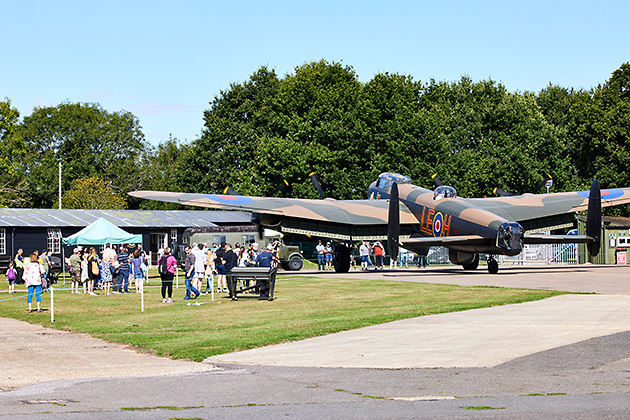
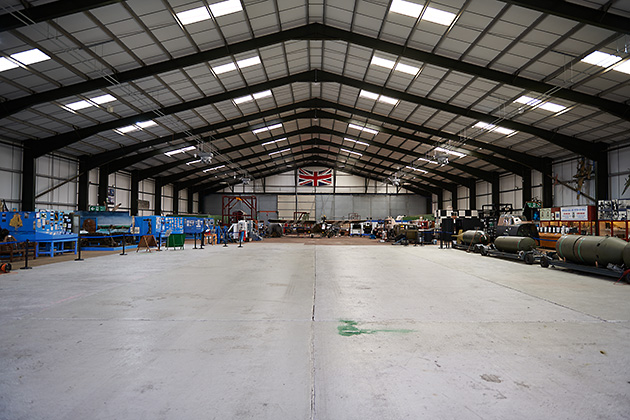
Pilot Officer Christopher Whitton Panton was a Flight Engineer on Handley Page HALIFAX bombers with 433 Squadron of the Royal Canadian Air Force. On the night of Friday March 30, 1944, his Halifax HX272 took off from RAF Skipton-on-Swale to take part in a raid on Nuremberg, Germany. His Halifax was attacked by a night fighter over Friesen, Germany, resulting in a fire and then an explosion which took the lives of Christopher and four of his crew mates, while three others survived to become prisoners of war. That night was the most costly operation of the war for the British, as 95 of the 795 aircraft dispatched were shot down and another 10 crashed on landing. The raid was conducted on a cloudless night with a full moon, and was compounded by the fact the bombers created contrails that marked their exact position. 545 airmen were killed and another 159 were taken prisoner, resulting in the raid being commonly referred to as ‘Black Friday’.
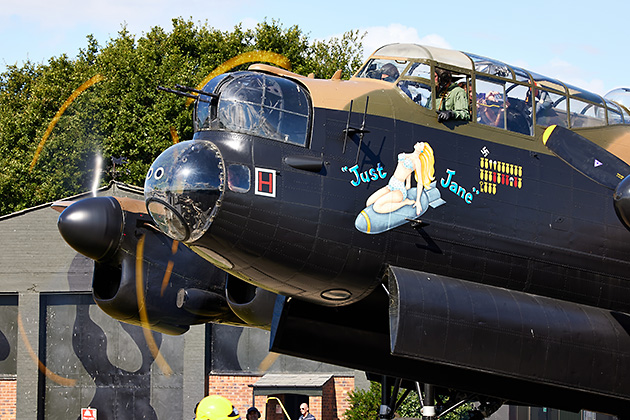
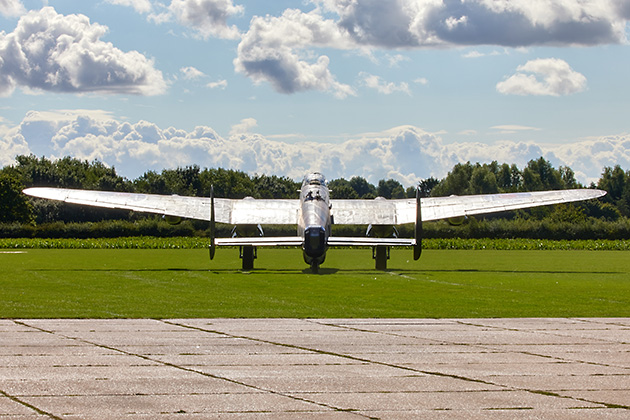
‘Just Jane’ was built by Austin Motors at Longbridge near Birmingham in April 1945 and received the serial number NX611. It was intended to serve in the Far East with the Tiger Force flying operations against Japan. After the Japanese surrender, the aircraft was moved to storage at Llandow until 1952 when it was sold to the French Government. It flew maritime patrol operations for the French Naval Air Arm before ending up in Noumeau, New Caledonia, and being used for air-sea rescue and cartography. In 1964 it was one of two aircraft donated by the French to the Historical Aircraft Preservation Society in Australia and while the other Lancaster remained in Sydney, NX611 received an overhaul before a nine day, 12,000 mile flight to Biggin Hill in England. The aircraft ended up on auction in 1972 with Fred and Harold attempting to purchase it then, but it wasn’t until 1983 that the brothers were finally able to fulfill their interest of owning a Second World War Bomber while it was serving as a Gate Guard at RAF Scrampton. ‘Just Jane’ was moved to its current home in 1987 and resides in a new hangar that was built on the original foundation of the T2 hangar at RAF East Kirkby.
Walking on to the grounds and in to the NAAFI, which acts as a reception, gift shop and restaurant, there was Bomber Command memorabilia everywhere
Shawn Clish
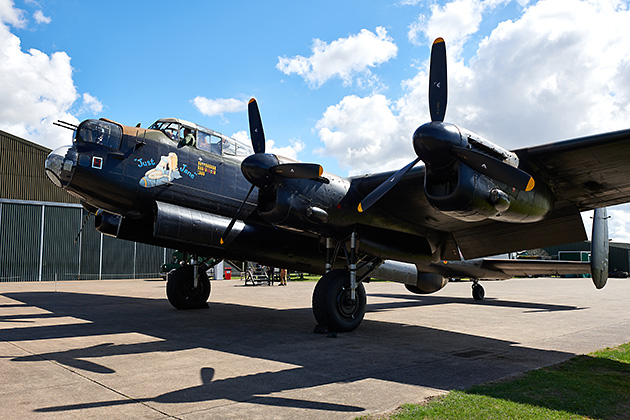
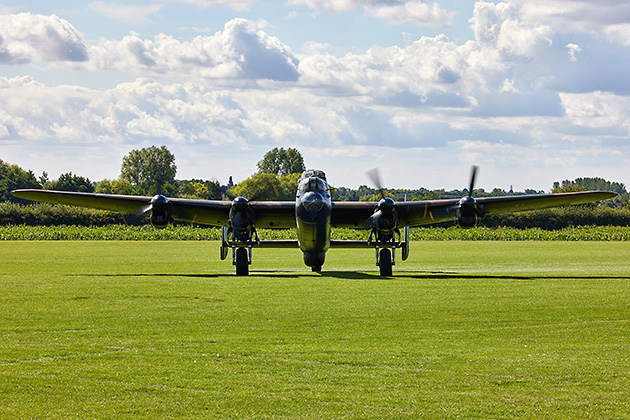
Work started in 1993 to bring the Lancaster’s Rolls-Royce Merlin engines back to life. Hundreds of man hours and thousands of pounds were required to bring each engine and its many parts to a working condition, but eventually ‘Just Jane’ was restored to her current fully operational taxiing standard. That’s what I was there to witness on the beautiful late summer morning. Walking on to the grounds and in to the NAAFI, which acts as a reception, gift shop and restaurant, there was Bomber Command memorabilia everywhere. Once through, the most famous of the British bombers, the Lancaster, was parked next to the roped-off public area, facing south towards the grass strip that is a section of the original runway. Of the 7377 Lancasters produced, approximately 17 are still intact and only three remain active. Besides NX611, airworthy aircraft are operated by the RAF Battle of Britain Memorial Flight at nearby RAF Coningsby, and the Canadian Warplane Heritage Museum in Hamilton, Canada. Ahead of their ride, the morning passengers received a detailed tour of the Lancaster followed by pictures while sitting in the aircraft commander’s seat. Then at 11am, with passengers and crew aboard and under the watchful eye of maintenance personnel and the fire department, the start sequence began. First, power was supplied to the aircraft, then brake pressure was provided and finally the airscrew control was set to Fine. The Number 3 engine is started first to provide power to the generators, inverters and gyros. The throttle control was moved forward an inch followed by the fuel pump and Magnetos being turned on. With fuel introduced through a primer, the switch guard was lifted and the start button was pushed to bring the engine to life. The sequence was repeated for engines 4, 2 and 1, in that order, with each engine producing a brief cough of smoke before coming to idle. A brief check of the engine instruments confirmed the Merlins were running smoothly and NX611 was off and taxiing from the paved apron to the grass strip. The Lancaster taxied around on the grass to warm up the oil and cylinder heads before it performed a run-up then a simulated takeoff run. Twenty minutes later the Lancaster taxied back on to the apron and right up near the front gate before shutting down. It looked majestic under the brilliant blue sky, with its latest operation complete. Passengers deplaned and the ground crew got to work to prepare the aircraft again as the tour and taxy process would be repeated twice more that day.
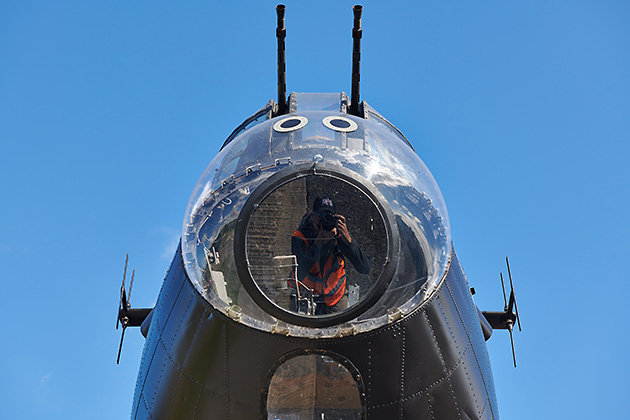
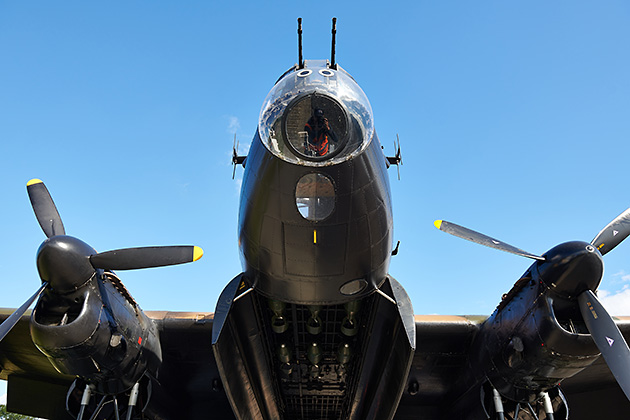
While the NX611 taxy season runs from May to November, there is a lot of work going on behind the scenes with the ultimate goal of restoring NX611 to an airworthy condition. Over the last two years, the Linconshire Aviation Heritage Centre has partnered with les Ailes Anciennes at le Bourget in France and their Avro Lancaster Mk.VII NX664. The plan is to swap wings between the two aircraft, so that ‘Just Jane’ can continue to raise money conducting taxy experiences while les Ailes Anciennes works uninterrupted to get the wings to a flyable condition. The wing program will take approximately four years, with the entire restoration to flight hopefully being completed in ten. There is even a third Lancaster involved in this process, KB976, whose rear fuselage will be used to allow other necessary work to continue while ‘Just Jane’ is accessible to the public. The six step restoration requires a lot of assistance, especially financially, so a call is out to all aviation enthusiasts, historians, and good samaritans to help keep history alive. Please visit the Lincolnshire Aviation Heritage Centre online for the various donation options available.
Specifically, an NF.II variant, HJ711, owned by Tony Agar and moved to East Kirkby in 2017 to help further its restoration to a ground running condition
Shawn Clish
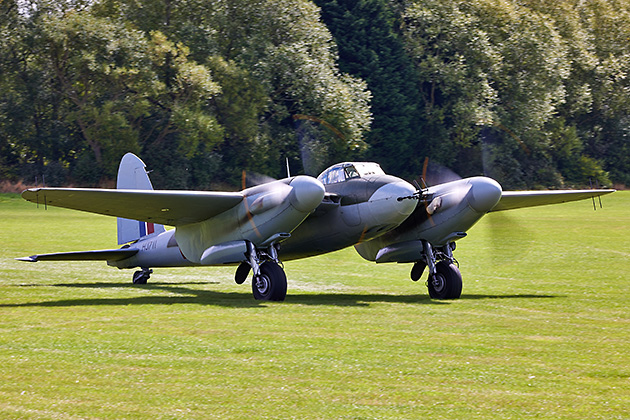
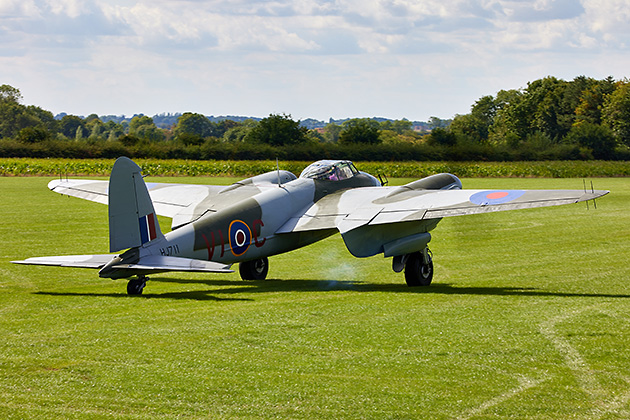
The second highlight of the day centred around Geoffrey de Havilland’s famous twin-engined, shoulder-winged, multirole aircraft constructed primarily of wood, the DH.98 Mosquito. Specifically, an NF.II variant, HJ711, owned by Tony Agar and moved to East Kirkby in 2017 to help further its restoration to a ground running condition. This NF.II variant is the only one of its kind remaining and comes with an incredible history. HJ711 served in the Royal Air Force with 141 and 169 squadrons, and is credited with shooting down a Messerschmitt BF110 over Berlin on January 30, 1944. The cockpit of HJ711, which was purchased at an auction on April 29, 1971 for just 7 pounds, has been joined with the wing undercarriage assemblies from B.XVI PF498, the port wing from T.III VA878, the fuselage of TT.35 RS715, and many other parts obtained from around the UK and across the world including Canada, America, New Zealand and Australia to make a complete aircraft. On May 15, 1991, twenty years after the restoration started, and to mark the fiftieth anniversary of the first flight of the Night Fighter Prototype Mosquito, W4052, the completed aircraft was wheeled onto the perimeter track at Elvington.
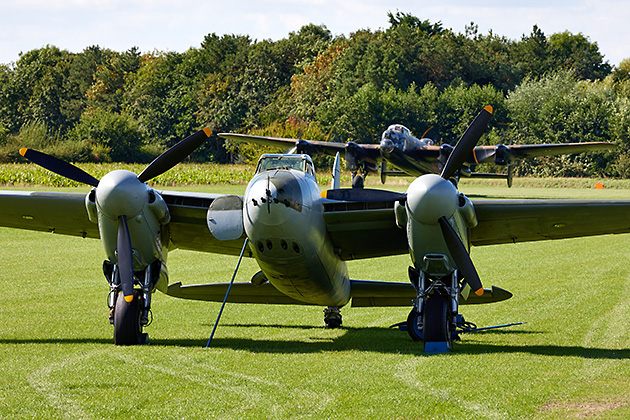
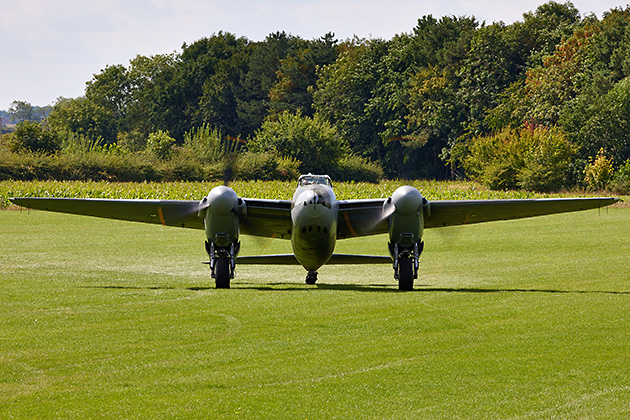
A lot of work was completed to get HJ711 to its present state and at midday on August 27, the two Rolls-Royce Merlin 25s were brought to life and a fortunate passenger was treated to a taxy run around the former RAF East Kirkby, just as the Lancaster had done earlier. However, unlike the Lancaster, the powerful Merlin engines on this Mosquito provided an enjoyable surprise for all in attendance, as the tail section momentarily lifted off the ground during the high power run-up. There are very few airworthy Mosquitos remaining and although this aircraft will probably never return to airworthy condition, it was nice to see its flying spirit still remains strong over 80 years after the ‘Wooden Wonder’ first took to the sky.
In a country filled with exceptional aviation museums, the Lincolnshire Aviation Heritage Centre still stands out as a special place to visit. The team maintains the former RAF station beautifully and there is history everywhere, from the NAAFI to the control tower and from the many artifacts in the hangar to the vehicles parked around the grounds. The visiting Mosquito is certainly impressive to see up close and the prospect of a Hampden is wonderfully ambitious. The heart of the museum is the Lancaster and while it was enjoyable to watch it come to life and taxy around on the grass strip, I hope to return one day and see it take flight. The opportunity for visitors to experience the sights, sounds, smells and atmosphere of a Lancaster at RAF East Kirkby is a wonderful tribute to Christopher Panton and all of Bomber Command. A special thank you to Andrew Panton and the team at Lincolnshire Aviation Heritage Centre for their hospitality.
Shawn Clish / CHK6

